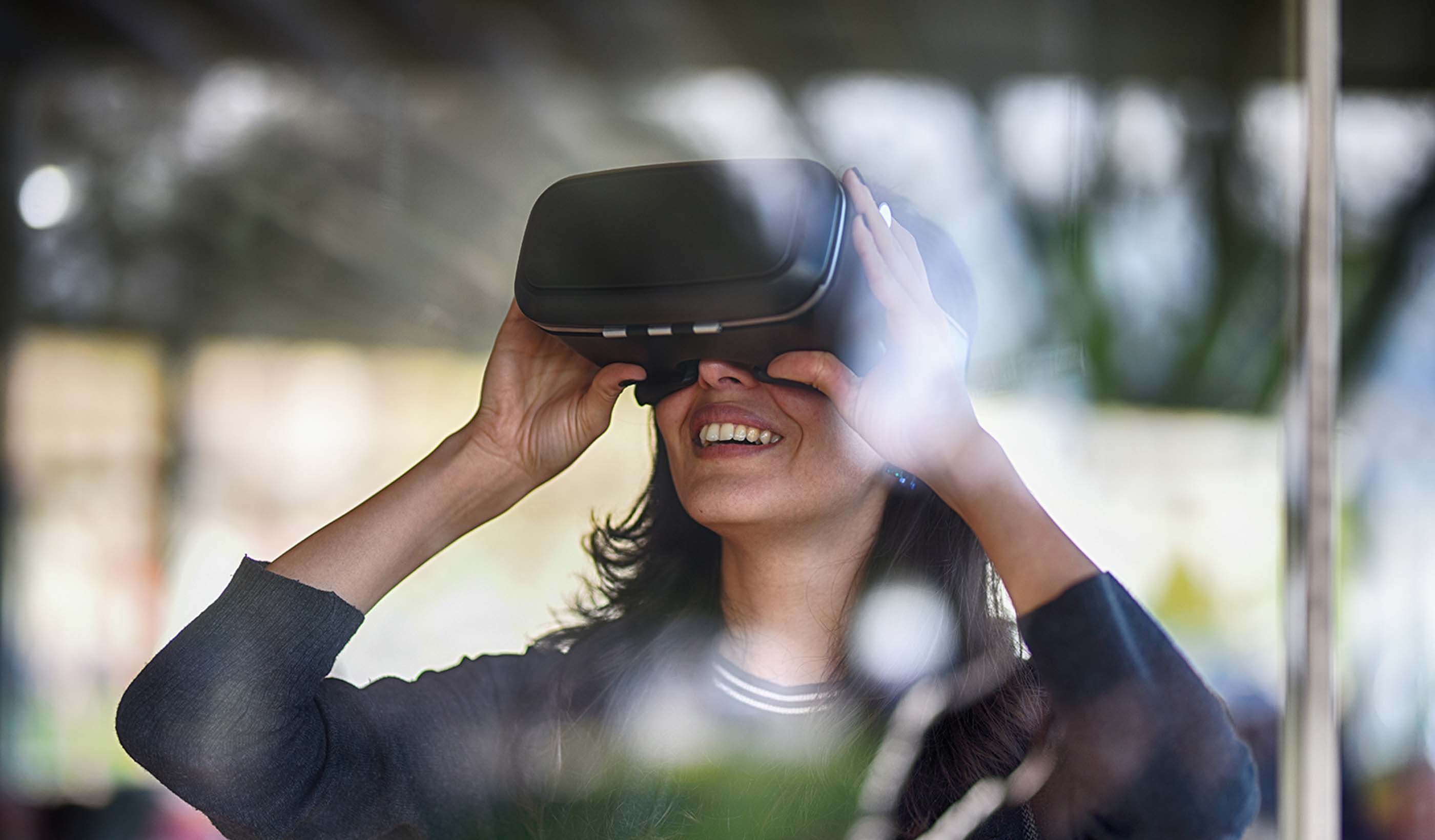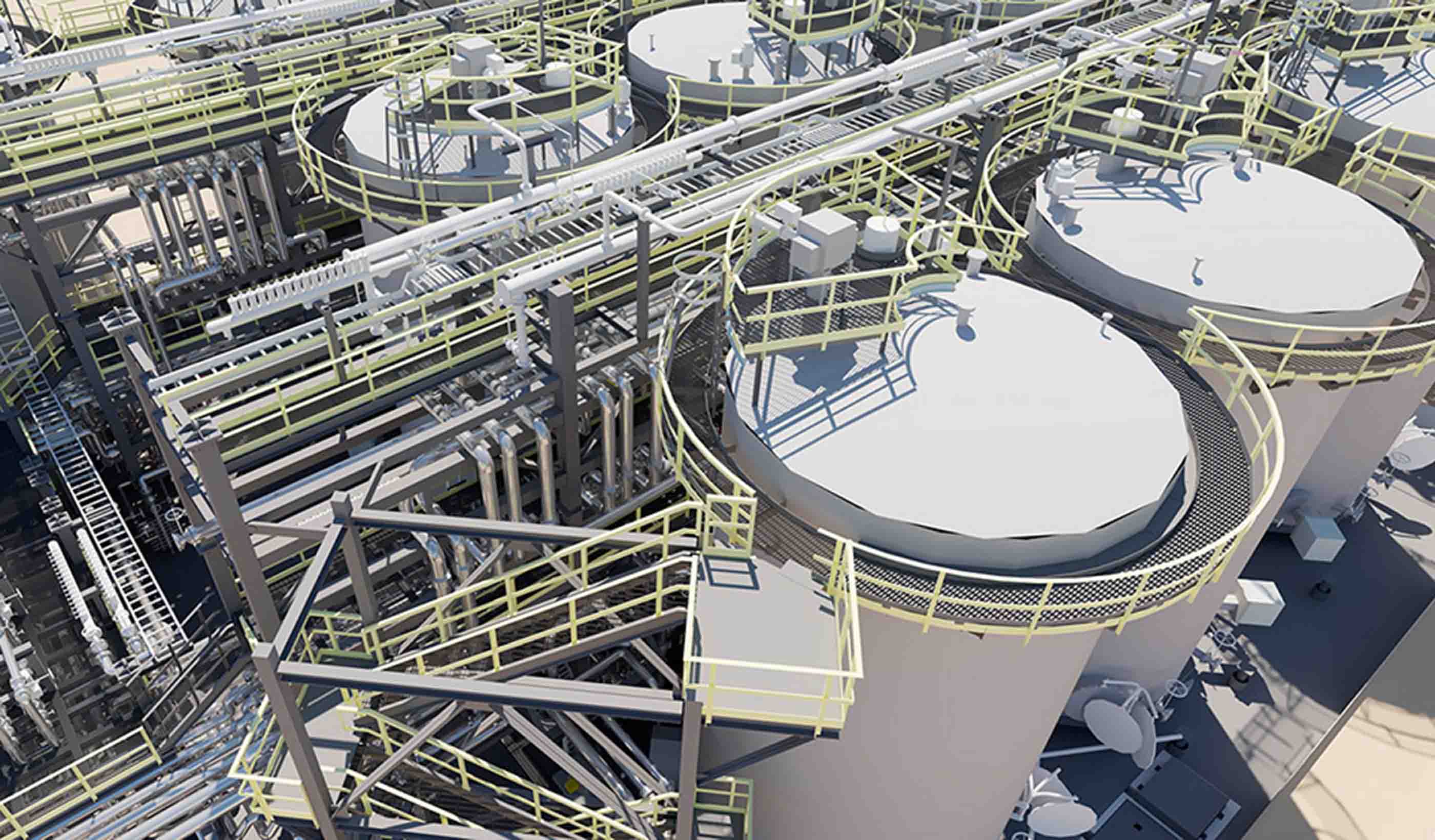Virtual reality is the future of the oil and gas industry
August 29, 2019
August 29, 2019
How VR is improving the industry—better design, improved safety, and cost savings
Virtual reality (VR) is an amazing technology. It is new, different, and fun. VR is more than a trending fad though—it is good business. It can improve our designs, save our clients’ money, and efficiently communicate our goals.
For years, the oil and gas industry has tried to visually communicate our final product. Whether a physical 3D model made of plastic, a beautiful hand-drawn presentation sketch, a high-quality rendering, or something similar, we all acknowledge the need to visualize the design.
However, we need help. It is challenging to look at a 2D schematic drawing or a site plan and grasp the scale and complexity of the final product. This is how virtual reality is changing the game.
VR provides the ability to understand and visualize a design. The technology enriches our perspective and enables us to view a project from a first-person standpoint on a real-world scale. We can experience a design.

The highly immersive and interactive nature of VR allows us to review our designs in a way that wasn’t possible before. Individuals can review sight lines and means of egress, experience the scale of certain aspects of the design, and ensure accessibility well in advance. Occasionally, items that look great on paper fall short in the real world. VR enables us to make the needed improvements before construction begins.
In the oil and gas industry, it is important to think about the operators who will be working in the facilities that we design. For example, if a person can’t reach a valve to shut it off, we need to know that. VR makes this easier by allowing us to visualize things at a real-world scale and determine if things are laid out nicely for a person to operate. We need to know that things are orientated for the greatest ease of use.
It is challenging to look at a 2D schematic drawing or a site plan and grasp the scale and complexity of the final product.
Safety is of paramount importance on O&G projects. VR helps us intuitively make informed design decisions on otherwise complex, remote, and potentially unsafe projects.
For example, on one of our projects, we had pressure safety valves (PSVs) venting to atmosphere in one location of the facility. The team thought all safety concerns were properly addressed. However, a review of the design in VR revealed that standing in certain locations of the facility would mean being directly in the path of these PSV’s should they open. Although the likelihood of an incident was low, small changes were made to the design that completely mitigated the issue and resolved the safety concern.

VR helps us create cost efficiencies for our clients by offering improved designs.
One example of how we saved our client money by improving design by using VR stands out. Although a review of the site grading on one of our compressor station projects had already been done using traditional methods, it was decided that a review should be done using VR. By using VR, the team was able to realize the true scope of site work that was needed for the proposed design and that it wouldn’t be cost effective. We had already reviewed the data, but now we had a new means of analyzing the data. Alternative options were reviewed in VR with the client and design changes were proposed that led to an estimated savings of $2 million. Site grading that seemed reasonable in 2D designs—and even in 3D models—felt less so in VR.
When you experience a design in VR, new ideas jump to mind that aren’t apparent otherwise. “What if we moved that over here? Wouldn’t that make things easier and reduce costs?” Errors can also be caught earlier in the design process. Objects that are clashing, missing, or in the wrong location can be easily spotted and adjusted when viewed from a real-world perspective.
In the end, we save time and money for our clients by catching these design changes early on.
Improvements in technology have made VR accessible. It is no longer too complicated, time-consuming, or expensive.
VR isn’t a gimmick. It is not just a marketing effort or a tool to impress others. It offers real value on real projects. It allows us to provide a much better final product to our clients.
That’s why VR is good for business.